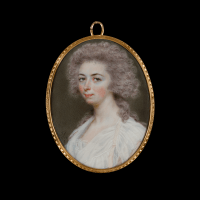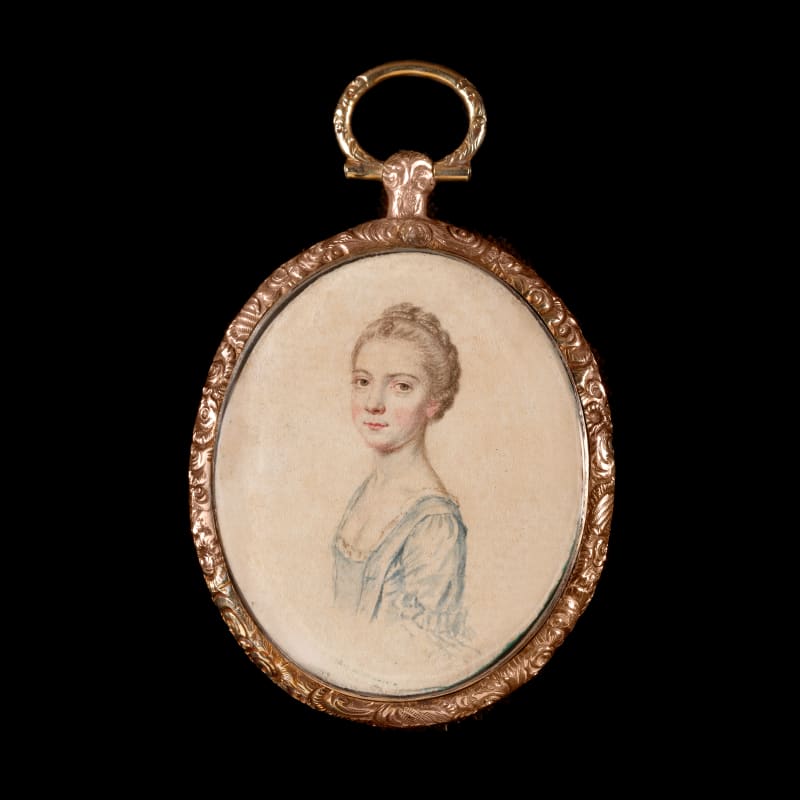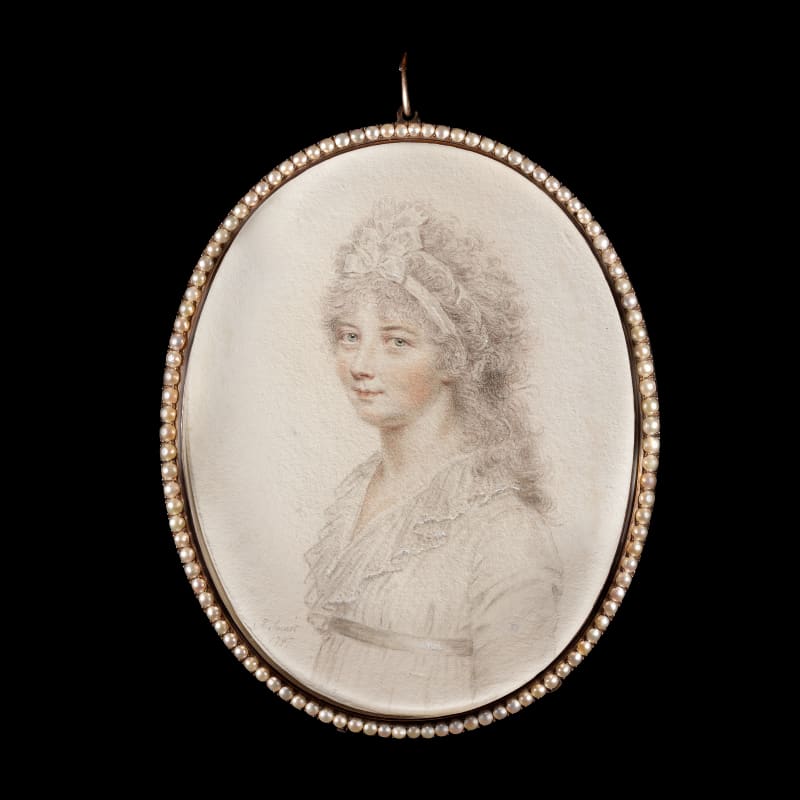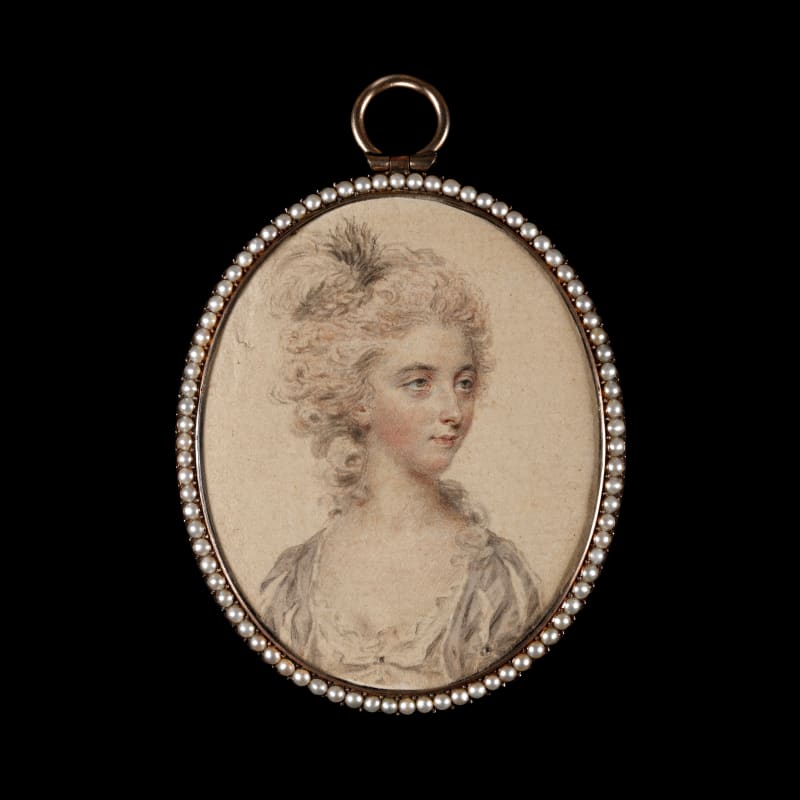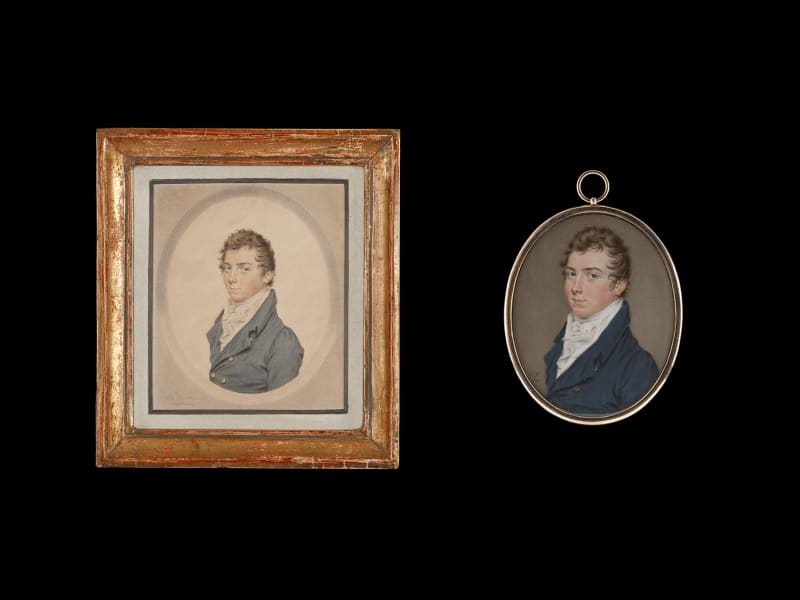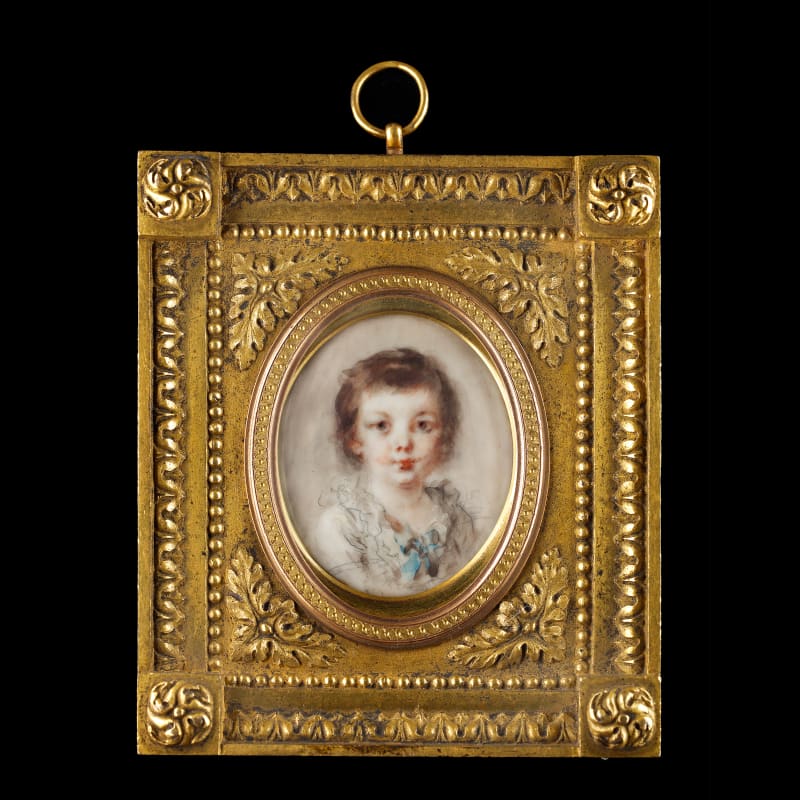This jewel-like portrait miniature demonstrates Smart’s acute and unrivalled attention to detail. By this date, Smart was at the pinnacle of his artistic career and had built an illustrious clientele in India. Testament to Smart’s forensic painting technique is the sheen of perspiration seen on the sitter’s nose and her flushed cheeks, evidence of the stiflingly hot Indian climate. The sitter's glamorous powdered hair boasts of her highly fashionable status, supported by her pale pink dress with frilled lace collar. It is framed in the original frame, which is notably elegant and slim, the border of the front and reverse defined by a fine band of bright-cut engraving, with similar decoration echoed around the edge of the central hair reserve on the reverse - a style which John favoured during his time in India.
The sitter is Anne Chase (née Rand), whose husband Thomas was appointed East-India Company’s covenanted civil servant on the Fort St. George Establishment in 1780....
This jewel-like portrait miniature demonstrates Smart’s acute and unrivalled attention to detail. By this date, Smart was at the pinnacle of his artistic career and had built an illustrious clientele in India. Testament to Smart’s forensic painting technique is the sheen of perspiration seen on the sitter’s nose and her flushed cheeks, evidence of the stiflingly hot Indian climate. The sitter's glamorous powdered hair boasts of her highly fashionable status, supported by her pale pink dress with frilled lace collar. It is framed in the original frame, which is notably elegant and slim, the border of the front and reverse defined by a fine band of bright-cut engraving, with similar decoration echoed around the edge of the central hair reserve on the reverse - a style which John favoured during his time in India.
The sitter is Anne Chase (née Rand), whose husband Thomas was appointed East-India Company’s covenanted civil servant on the Fort St. George Establishment in 1780. In the East India Company’s List of Civil Servants Thomas was first listed as a ‘factor’[1], and later as a ‘junior merchant’.[2]
A year after his marriage to Ann, in 1788. Thomas was working as agent to Gilbert Ross, as well as carrying out his official duties of ‘Senior Merchant, Clerk of Justice, Clerk to the Commissioner of Stores, Coroner and French Translator’.
Ann would have enjoyed a good standard of living in India, as a Civil Servant’s salary amounted to circa £550 per annum, a steady income which Thomas boosted massively through private trade. Between 1789 and 1793, he set up a banking trade-agency business called Chase & Parry in partnership with merchant Thomas Parry, making a total profit of ‘11,882 star pagodas’.[3] This became Chase, Parry & Co. when Thomas’s brother-in-law, ex-naval officer Henry Sewell, joined the business.[4]
By 1796 the agency had changed into Chase, Sewell, & Chase with the addition of his brother Richard Chase.[5]
Ivory Act:
This artwork has been registered by Philip Mould and Company as qualifying as exempt from the ivory act. Please contact laura@philipmould.com if you have any further queries.
Ivory Registration: Z24MFACF
[1] From Merriam-Webster: ‘One that lends money to producers and dealers (as on the security of accounts receivable)’.
[2] A List of the Company’s Civil Servants, At Their Settlements in the East-Indies, 1785, p. 43; 1790, p. 38.
[3] 1 HODGSON, G.H., Thomas Parry Free Merchant Madras 1768-1824, Higginbothams, Madras, 1938, pp. 33, 38- 39.
[4] HODGSON, p. 46.
[5] See advertisement on the tickets of the Second Madras Male Asylum and Bridge Lottery Scheme in Calcutta Gazette, 18 February 1796.


